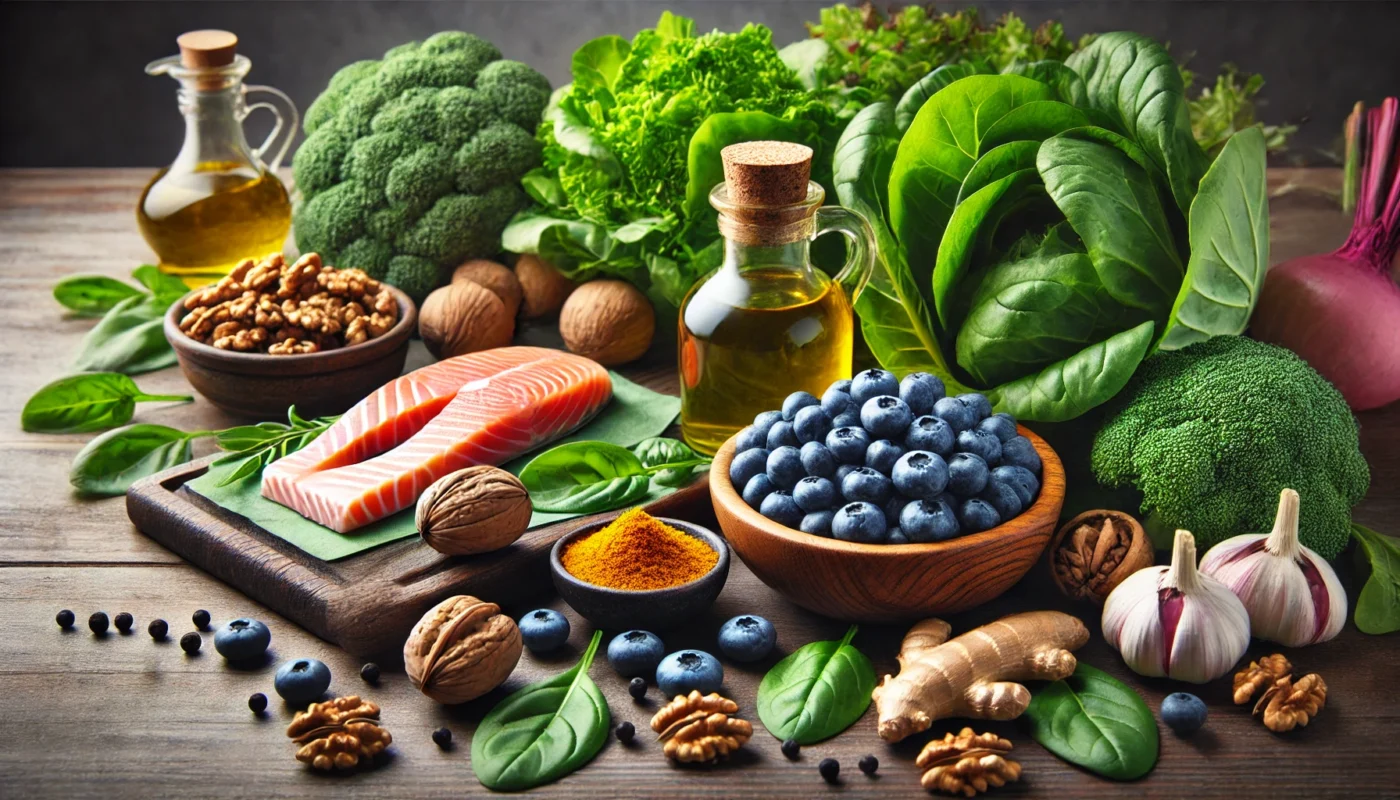Tendonitis can be a painful and frustrating condition. It’s characterized by inflammation and irritation of the tendons, the fibrous tissues that connect our muscles to our bones.
For many, the journey to relief can seem daunting. But did you know that your diet can play a significant role in managing tendonitis?
Certain foods can exacerbate inflammation, worsening the symptoms of tendonitis. Conversely, other foods can help reduce inflammation, aiding in recovery.
This article aims to guide you through the maze of dietary choices. We’ll delve into the science behind how diet impacts inflammation and tendon health.
We’ll identify specific foods that may worsen tendonitis and should be avoided. We’ll also highlight beneficial foods that can support your recovery journey.
Beyond that, we’ll explore holistic and alternative approaches to managing tendonitis. This will provide a well-rounded perspective on the condition.
Whether you’re a fitness enthusiast, a health enthusiast, or a medical patient, this comprehensive guide will equip you with practical dietary strategies for tendonitis relief.
So, let’s embark on this journey towards understanding and managing tendonitis through diet. Your path to relief could be just a few dietary adjustments away.
You May Also Like: Understanding the Anti-Inflammatory Elimination Diet
Understanding Tendonitis and the Role of Diet
Tendonitis occurs when tendons become inflamed, often due to overuse or injury. This results in pain, stiffness, and swelling. Understanding what causes inflammation helps in managing the condition effectively.
Diet plays a critical role in this process. Foods you consume can either promote or reduce inflammation. By carefully selecting what you eat, you can influence the body’s inflammatory response.
Certain foods are known to worsen tendonitis symptoms. Recognizing these can aid in modifying your diet for better outcomes. Conversely, some foods help reduce inflammation and support tendon health.
It’s essential to differentiate which foods belong to each category. This involves understanding their components and how they interact with the body’s inflammatory pathways.
Let’s look at some dietary elements that impact tendonitis:
- Refined Sugars: These can spike insulin levels and increase inflammation.
- Saturated and Trans Fats: Found in many processed foods, they can also contribute to inflammation.
- Alcohol: Can slow healing and worsen inflammatory conditions.
Optimizing your diet involves more than just eliminating harmful foods. It’s about incorporating anti-inflammatory foods that promote healing. A balanced diet rich in vitamins, minerals, and healthy fats can nurture tendon health.
Consultation with a healthcare professional is crucial before making significant dietary changes. Understanding how diet influences tendonitis can empower you to take charge of your health effectively.
The Inflammatory Process in Tendonitis
Inflammation is the body’s natural response to injury or stress. It is part of the healing process but when it becomes chronic, it can lead to conditions like tendonitis.
In tendonitis, inflammation occurs in the tendons, causing pain and reduced function. This inflammation can persist, making recovery challenging.
Diet can influence inflammation levels significantly. Certain foods may aggravate inflammation, while others may help diminish it. Thus, managing what you eat is essential in controlling tendonitis symptoms.
How Foods Can Exacerbate Tendonitis Symptoms
Some foods can significantly worsen the symptoms of tendonitis. These foods increase the body’s inflammatory response, leading to heightened pain and discomfort.
Refined sugars are one such culprit. They can elevate insulin levels, contributing to inflammation. Similarly, high levels of saturated and trans fats also increase inflammatory markers in the body.
Alcohol, too, can have a negative impact. It can slow healing processes and exacerbate inflammatory conditions, including tendonitis.
Being mindful of these dietary triggers can help manage the symptoms more effectively. Avoiding them provides a basis for better tendon health and improved overall well-being.

Foods That May Worsen Tendonitis
Certain foods can exacerbate tendonitis symptoms by increasing inflammation. Identifying these foods is crucial for managing the condition effectively.
Refined Sugars and High-Glycemic Foods
Refined sugars can be sneaky culprits in the battle against inflammation. They cause spikes in blood sugar, leading to increased insulin production. This surge can trigger inflammatory pathways, making tendonitis symptoms worse.
High-glycemic foods, like white bread and processed snacks, behave similarly. They cause rapid glucose absorption, prompting inflammation. Reducing these foods can help control inflammation and tendonitis symptoms.
Instead, consider low-glycemic alternatives that digest slowly. Whole grains and fruits are excellent options. They stabilize blood sugar and reduce inflammation potential.
Saturated and Trans Fats
Saturated fats, commonly found in red meats and dairy products, can foster inflammation. Their intake raises cholesterol levels, which is linked to inflammatory processes.
Trans fats are even more harmful. Found in processed foods, they can increase inflammatory markers significantly. This negative impact on the body can hinder tendon healing.
Opting for healthier fats, such as those found in fish and nuts, can be beneficial. These sources provide essential fatty acids that support overall health and reduce inflammation.
Dairy Products and Gluten for Sensitive Individuals
Dairy products can contribute to inflammation in those with sensitivities. Not everyone is affected, but it’s crucial to identify if you are.
Gluten is another potential inflammatory trigger, especially for those with gluten intolerance. Its proteins can cause immune responses leading to inflammation.
Being aware of personal sensitivities allows better dietary choices. Alternatives like almond milk and gluten-free grains can help manage symptoms.
Nightshade Vegetables and Tendonitis
Nightshade vegetables, including tomatoes and peppers, spark debate around inflammation. They contain alkaloids that can irritate sensitive individuals.
Not everyone experiences this, but some report increased tendonitis symptoms after consuming nightshades. It’s beneficial to observe how your body reacts to these foods.
Consider moderating intake to see if symptoms improve. Emphasizing variety ensures nutritional balance without relying heavily on one food group.
Alcohol and Its Impact on Recovery
Alcohol can delay tendonitis recovery significantly. It affects liver function, impeding its ability to regulate inflammatory responses.
Additionally, alcohol dehydrates cells, including those in tendons. This hinders nutrient transport necessary for healing.
Minimizing alcohol consumption supports a healthier recovery environment. Opting for hydrating beverages like water or herbal teas can facilitate this process.
By making informed dietary choices, those with tendonitis can potentially reduce symptoms and support recovery.
Anti-Inflammatory Foods to Include in Your Diet
Incorporating the right foods can significantly aid in managing tendonitis. Anti-inflammatory choices help reduce swelling and support healing.
A well-balanced diet rich in beneficial nutrients can promote tendon health. These foods provide essential vitamins and minerals, too.
Here’s a list of anti-inflammatory foods to consider:
- Fatty fish like salmon and mackerel
- Green leafy vegetables such as spinach and kale
- Nuts and seeds including walnuts and flaxseeds
- Berries, particularly blueberries and strawberries
- Olive oil as a healthy fat source
- Green tea for its polyphenols
Introducing these foods progressively ensures you develop sustainable habits.
Omega-3 Fatty Acids and Their Benefits
Omega-3 fatty acids, predominantly found in fatty fish, play a crucial role in reducing inflammation. They combat inflammatory molecules and aid in cellular repair.
Regularly eating fish like salmon, sardines, and mackerel can furnish these healthy fats. These sources are not only beneficial for tendons but also support heart health.
For those who prefer plant-based sources, flaxseeds and chia seeds are excellent alternatives. They offer omega-3s, reinforcing your anti-inflammatory diet.
Antioxidant-Rich Foods for Tendon Health
Antioxidants are vital in protecting tendons against oxidative stress. This stress can exacerbate inflammation and delay healing.
Foods rich in antioxidants can help combat these effects. Berries, such as blueberries and strawberries, are powerhouse options loaded with antioxidants.
Additionally, green leafy vegetables and brightly colored fruits provide a good antioxidant punch. Regular consumption aids in maintaining overall health.
These dietary changes, focusing on adding nutrient-rich foods, can help reduce inflammation and support tendon recovery. Making them a regular part of your meals can contribute to improved tendon health.

Holistic and Alternative Approaches to Managing Tendonitis
Embracing holistic practices can offer a complementary path to tendonitis relief. These methods focus on the body as a whole, supporting healing naturally.
Alternative approaches often incorporate dietary and lifestyle changes. They aim to reduce stress on tendons while promoting overall wellness.
Combining traditional treatments with holistic methods may enhance recovery. This integrative strategy can be particularly beneficial for chronic cases.
Exploring various options, such as herbal supplements and physical therapies, can help find what works best for each individual.
Herbal Supplements and Their Anti-Inflammatory Properties
Herbs like turmeric and ginger are famous for their anti-inflammatory benefits. They have compounds that can help reduce tendon swelling and pain.
Turmeric contains curcumin, a powerful anti-inflammatory agent. Adding it to meals or taking it in supplement form can be beneficial.
Ginger, known for its antioxidant properties, can also be consumed fresh or as tea. Including these herbs in your routine may support tendon health.
The Role of Physical Therapy and Exercise
Physical therapy can be pivotal in tendonitis recovery. It helps improve flexibility, strength, and range of motion in affected areas.
Exercises tailored to individual needs can prevent further injury. A physical therapist can design a plan that gradually enhances tendon function.
Incorporating low-impact exercises like swimming or cycling may also provide relief. Consistent practice helps maintain tendon health and prevent future issues.
Acupuncture, Massage, and Mind-Body Techniques
Acupuncture has gained popularity for pain relief and reducing inflammation. It involves inserting thin needles at specific body points to balance energy.
Massage therapy can improve circulation and promote relaxation in overworked tendons. It helps relieve tension and supports the healing process.
Mind-body techniques, such as yoga and meditation, play a vital role in stress reduction. Managing stress effectively can mitigate inflammation and aid recovery.
These alternative therapies, often used alongside medical treatments, can offer a holistic approach to alleviating tendonitis symptoms.
Practical Dietary Strategies for Tendonitis Relief
Diet plays a crucial role in managing tendonitis. Implementing strategic changes can help minimize inflammation and promote recovery.
Start by focusing on anti-inflammatory foods. These can support your body’s natural healing processes and reduce discomfort.
Balancing your diet is key. Include a variety of nutrients to ensure comprehensive benefits for tendon health.
Here are some practical strategies to consider:
- Incorporate more fruits and vegetables: These are rich in antioxidants, which help combat inflammation.
- Choose whole grains over refined ones: They provide necessary fiber and nutrients while supporting stable blood sugar levels.
- Opt for lean proteins: Sources like fish, chicken, or plant-based proteins promote muscle repair and support tendons.
- Include healthy fats: Avocado, nuts, and olive oil provide beneficial fats that enhance joint health.
- Stay hydrated: Proper hydration supports nutrient delivery and waste elimination, crucial for recovery.
Being mindful of food choices can make a significant difference. Adjusting dietary habits is a proactive step toward tendonitis relief.
Identifying and Eliminating Inflammatory Foods
The first step in managing tendonitis through diet is identifying inflammatory foods. Some foods can exacerbate symptoms and slow recovery.
Refined sugars and high-glycemic foods are common culprits. They can spike blood sugar levels and contribute to systemic inflammation.
Start by reducing processed and packaged foods. These often contain hidden sugars and unhealthy fats that can worsen inflammation.
Saturated and trans fats are another concern. They’re found in fried foods and many baked goods, impacting overall health negatively.
Some individuals may react to dairy or gluten. It’s important to recognize personal sensitivities and adjust your diet accordingly.
Eliminating these triggers can promote healing and reduce discomfort. A thoughtful approach to eating supports long-term tendon health.
Reading Food Labels and Identifying Hidden Ingredients
Understanding food labels is essential in managing tendonitis through diet. It enables you to avoid ingredients that may hinder recovery.
Begin by scanning ingredient lists for refined sugars. Ingredients ending in ‘-ose’, such as glucose or fructose, indicate added sugars.
Watch for unhealthy fats like hydrogenated oils. These trans fats are often lurking in processed foods, even if labels claim otherwise.
Be cautious of additives and preservatives. These can contribute to inflammation, especially in sensitive individuals.
Check the sodium content, as high-sodium foods can lead to fluid retention and inflammation. Opt for low-sodium alternatives when possible.
Understanding labels empowers informed decisions. This knowledge helps steer dietary choices toward supporting tendon health.
By taking these steps, you can effectively manage tendonitis and support a healthier lifestyle.

The Importance of a Balanced Diet and Lifestyle
A balanced diet is fundamental for tendon health and overall wellness. It provides the body with essential nutrients, aiding in recovery and reducing inflammation.
Incorporating a variety of foods ensures you receive all necessary vitamins and minerals. Each nutrient plays a distinct role in maintaining the body’s functions, including collagen synthesis and energy production.
A balanced lifestyle extends beyond diet. Regular physical activity, adequate sleep, and stress management are critical elements. These practices complement dietary choices, enhancing the body’s ability to heal and function optimally.
Making mindful lifestyle choices can have a profound impact. Establishing a routine that combines healthy eating, exercise, and rest supports long-term tendon health and overall vitality.
Macronutrient Balance and Tendon Health
Maintaining a proper balance of macronutrients—carbohydrates, proteins, and fats—is pivotal for tendon health. Each macronutrient has a unique role in supporting tendon function and recovery.
Proteins, for instance, are vital for tissue repair and muscle support. They should be a staple in your diet to facilitate tendon healing. Opt for lean protein sources like fish, poultry, or legumes to maximize their benefits.
Carbohydrates fuel your body, providing the energy needed for daily activities and recovery. Emphasize whole grains, fruits, and vegetables to ensure stable energy levels and nutrient intake.
Fats, particularly healthy fats, support cell structure and reduce inflammation. Include sources like nuts and seeds, which offer additional nutrients beneficial to tendons. Balancing these macronutrients promotes optimal tendon health and reduces injury risks.
Weight Management and Tendon Stress Reduction
Weight management plays a critical role in reducing stress on tendons. Excess weight can increase the strain on these tissues, exacerbating inflammation and pain.
Achieving a healthy weight through a balanced diet and exercise can alleviate pressure on tendons. This promotes their ability to recover and function effectively. Incorporate both cardiovascular and strength-training exercises to support weight management and muscle health.
Mindful eating practices, such as portion control and choosing nutrient-dense foods, are vital. They help maintain a healthy weight without depriving the body of essential nutrients.
Consider engaging in low-impact activities, like swimming or cycling, to stay active while minimizing stress on joints and tendons. Together, these strategies contribute to tendon longevity and improved quality of life.
Conclusion and Long-Term Strategies for Tendon Health
Tendon health requires a holistic and proactive approach. It goes beyond immediate relief, emphasizing sustainable practices for long-term wellbeing. Implementing effective dietary changes can significantly impact your tendon health over time.
Consistency in your dietary choices nurtures a foundation for continuous improvement. By choosing anti-inflammatory foods regularly, you enable your body to heal and maintain optimal function. This consistency is key to preventing future tendon issues and fostering overall health.
Integrating lifestyle adaptations, like regular exercise and adequate rest, further supports tendon health. These practices work synergistically with diet, enhancing recovery and resilience against injuries. Exercise strengthens surrounding muscles, while rest permits necessary tissue repair.
Long-term strategies should remain adaptable, adjusting to your evolving health needs. They ensure that your approach to tendon care remains relevant and effective. By adopting these practices, you prepare your body for any tendon challenges that may arise.
The Role of Consistency and Community Support
Consistency forms the backbone of successful tendon health strategies. Regular adherence to healthy routines enables gradual, sustainable improvements. It builds habits that reinforce your body’s healing processes and resilience.
Community support plays a vital role in maintaining consistency. Engaging with others who share similar goals offers encouragement and shared knowledge. It provides motivation to stick to dietary and lifestyle changes, even when challenges arise.
Support groups and online forums can be valuable resources. They connect you with individuals who have firsthand experience in managing tendon issues. Sharing strategies and successes within a community can inspire ongoing dedication to personal health goals.
Setting Realistic Goals and Monitoring Progress
Realistic goal-setting is crucial to tendon health management. It ensures that objectives are achievable and aligned with your current capabilities. Setting goals that are too ambitious may lead to frustration and setbacks.
Start with small, manageable changes. Gradually increase the complexity or intensity as you become more comfortable. This approach builds confidence and facilitates sustained progress.
Regularly monitoring your progress helps identify areas for improvement. Keep track of dietary changes, physical activity, and symptom relief. This information provides valuable insights and allows you to adjust your strategies as needed.
Remain patient and remember that recovery and improvement take time. By setting realistic goals and monitoring your progress, you create a pathway to long-term tendon health and wellness.
Further Reading:
The impact of nutrition on tendon health and tendinopathy: a systematic review
Natural remedies for tendinitis inflammation
Foods to Avoid for Bursitis & Tendinitis
tendonitis, diet, inflammation, healthy eating, macronutrients, weight management, tendon health, lifestyle changes, food labels, community support, recovery, exercise, anti-inflammatory foods, balanced diet, nutrition
Important Note: The information contained in this article is for general informational purposes only, and should not be construed as health or medical advice, nor is it intended to diagnose, prevent, treat, or cure any disease or health condition. Before embarking on any diet, fitness regimen, or program of nutritional supplementation, it is advisable to consult your healthcare professional in order to determine its safety and probable efficacy in terms of your individual state of health.
Regarding Nutritional Supplements Or Other Non-Prescription Health Products: If any nutritional supplements or other non-prescription health products are mentioned in the foregoing article, any claims or statements made about them have not been evaluated by the U.S. Food and Drug Administration, and such nutritional supplements or other health products are not intended to diagnose, treat, cure, or prevent any disease.

